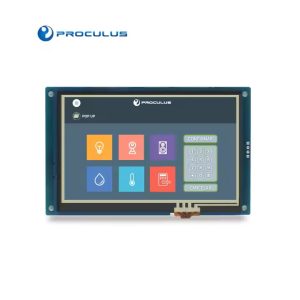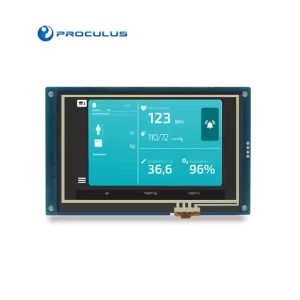What Will Determine the Brightness of the LCD Display?
LCDs have been on the market for nearly 10 years, and they have completely replaced the most traditional CRT displays and become the absolute mainstream in the market. The structure of the LCD screen module is to place liquid crystals between two parallel pieces of glass. There are many small vertical and horizontal wires between the two pieces of glass. The rod-shaped crystal molecules can be controlled to change the direction and refract the light through whether or not electricity is applied. Produce a picture. It has longer service life than CRT, lower energy consumption, and lower cost. So what will determine the brightness of the LCD display?
Ⅰ. Determinants of LCD display brightness-backlight
As we all know, LCD liquid crystal displays present images through a special backlight source, and the performance of the backlight source also has an important influence on the brightness of the display screen, so the brightness of the wholesale TFT LCD display depends only on the backlight source.
After the backlight emits light, the light is controlled by the voltage of the front LCD display panel, and the liquid crystal molecules allow the light to pass through or mask to display the brightness of the image. This process is controlled by an IC chip, which is similar in principle to a shutter in a camera and can control the luminous flux. Camera products are usually equipped with a shutter on the back of the lens. When shooting, the shutter is opened to allow the object to be imaged in the film or photosensitive element to form a photo. In addition, the liquid crystal panel emits light with balanced brightness from a backlight, which is blocked/controlled by the light of the liquid crystal panel and is imaged by the light and shadow of the light.
When viewing images on an LCD monitor or LCD TV, you will find that the light passing through the LCD liquid crystal display not only appears in bright and dark forms but also has various colors from bright to dark. In addition, when we continuously watch an animation, the standard is that we need 60 pictures per second, that is, the light and dark state is switched 60 times per second. To display the pictures accurately, there must be enough pixels. The structure of the liquid crystal panel should also be fine enough. From this perspective, high-end LCD panels and low-end products will be different in this respect, which is also one of the reasons for the cost difference.
Ⅱ. LCD display can use voltage to control light intensity at high speed
But since LCD display products can only control light and shadow, this mechanism is only effective for black and white pictures. If you want to display a color picture, you also need to place a color filter in front of the liquid crystal molecule layer to add color to the bright light and dark light. Therefore, in addition to the brightness of the backlight itself, the control of the liquid crystal molecules by the IC chip (operating on/off), the quality of the liquid crystal panel itself and the aperture ratio, and the light transmittance will all have a certain impact on the brightness of the liquid crystal display.
The LCD liquid crystal display has very little radiation to the human body, and the screen is soft and does not hurt the eyes. It can protect our eyesight. The body is thin and saves space. Compared with the more bulky CRT display, the LCD display only needs three points of the former. One of the spaces is also energy-saving and does not generate high temperature, which is a low-power-consumption product. If there is dust on the LCD display panel, you need to operate under the advice of professional maintenance personnel. Don’t just find a rag or rough thing to wipe it. Improper operation can easily damage the display and cause damage to the LCD display panel.

 English
English


